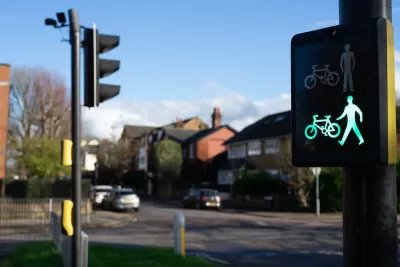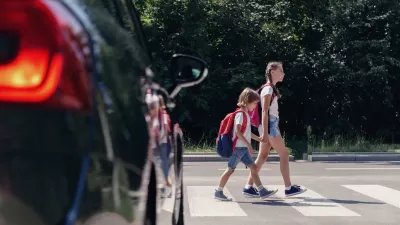How approaching transportation planning through a public health lens can reduce traffic deaths.

In an interview with Streetsblog for The Brake podcast, outgoing head of Washington state’s Department of Transportation Roger Millar describes why he believes including public health in Vision Zero discussions is key to saving more lives and making U.S. streets and roads safer and healthier for the people who use and live around them.
Discussing Washington’s “safe systems” framework — an approach that prioritizes road design that minimizes the potential harm caused by inevitable human error — Millar notes his focus on “safe land use.” In this view, “What all car crashes have in common is cars. And if you have a threat to public health, the public health community says the first thing you do is, you separate people from the threat.”
For Millar, “if we can create spaces, communities, neighborhoods, centers that are built around mobility or access that does not involve an automobile, or that minimizes the use of automobile, we would be safer. We have to have this safer land use component to the safe systems.”
FULL STORY: What’s Missing From the Safe Systems Approach

Trump Administration Could Effectively End Housing Voucher Program
Federal officials are eyeing major cuts to the Section 8 program that helps millions of low-income households pay rent.

Planetizen Federal Action Tracker
A weekly monitor of how Trump’s orders and actions are impacting planners and planning in America.

The 120 Year Old Tiny Home Villages That Sheltered San Francisco’s Earthquake Refugees
More than a century ago, San Francisco mobilized to house thousands of residents displaced by the 1906 earthquake. Could their strategy offer a model for the present?

HSR Reaches Key Settlement in Northern California City
The state’s high-speed rail authority reached an agreement with Millbrae, a key city on the train’s proposed route to San Francisco.

Washington State Legislature Passes Parking Reform Bill
A bill that would limit parking requirements for new developments is headed to the governor’s desk.

Missouri Law Would Ban Protections for Housing Voucher Users
A state law seeks to overturn source-of-income discrimination bans passed by several Missouri cities.
Urban Design for Planners 1: Software Tools
This six-course series explores essential urban design concepts using open source software and equips planners with the tools they need to participate fully in the urban design process.
Planning for Universal Design
Learn the tools for implementing Universal Design in planning regulations.
Ada County Highway District
Clanton & Associates, Inc.
Jessamine County Fiscal Court
Institute for Housing and Urban Development Studies (IHS)
City of Grandview
Harvard GSD Executive Education
Toledo-Lucas County Plan Commissions
Salt Lake City
NYU Wagner Graduate School of Public Service





























